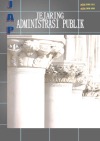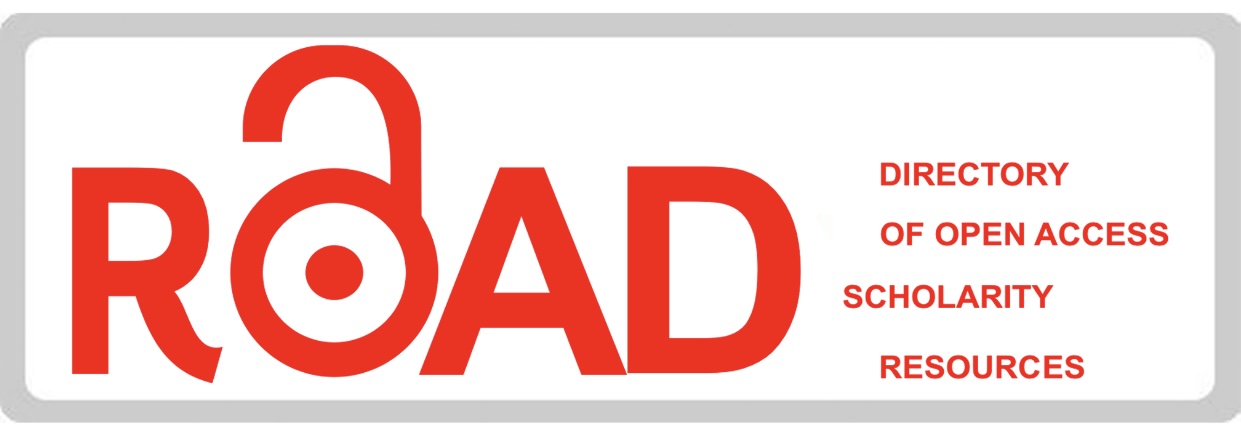Menakar Kelayakan Desain Penelitian Studi Kasus Untuk Analisis Kebijakan
Downloads
As a research design, case studies have received a lot of criticism from practitioners. The most substantial criticism is the high potential for bias and its ability to generalize research findings. When associated with policy analysis, both things will have a major impact on the policy recommendations that will be produced. As is commonly known, effective, efficient, and applicable policies are the most important part in overcoming public problems. Therefore, choosing the right method in policy analysis is absolutely necessary to produce qualified policy recommendations. This article uses a literature study method to reveal the advantages, disadvantages, and opportunities for case studies to be used as a research design in policy analysis. Despite the criticism, the advantages of case study research design in providing in-depth and contextual insights and its flexibility in using data collection methods make it a valuable tool in policy analysis. With a careful approach and proper validation, case studies can make a significant contribution to the development of evidence-based policies.
Keywords: bias, case study, generalization, public policy analysis, public policy
Adlini, M. N., Dinda, A. H., Yulinda, S., Chotimah, O., & Merliyana, S. J. (2022). Metode penelitian kualitatif studi pustaka. Jurnal Edumaspul: Jurnal Pendidikan, 6(1), 974–980. https://garuda.kemdikbud.go.id/documents/detail/2846813
Creswell, J.W., & Creswell, J.D. (2018). Fifth Edition Research Design Qualitative, Quantitative, and Mixed Methods Approaches. Sage Publications, Inc.
Creswell, J.W. and Poth, C.N. (2018) Qualitative Inquiry and Research Design Choosing among Five Approaches. 4th Edition, SAGE Publications, Inc., Thousand Oaks.
Crowe, S., Cresswell, K., Robertson, A., Huby, G., Avery, A., & Sheikh, A. (2011). The case study approach. BMC Medical Research Methodology, 11(100). https://doi.org/10.1186/1471-2288-11-100
Dunn, W.N. (2020). Pengantar Analisis Kebijakan Publik Edisi Kedua. (Wibawa, S., Asitadami, D., Hadna, A.H., Purwanto, E.A., Penerjemah). Gajah Mada University Press.
Flyvbjerg, B. (2006). Five Misunderstandings About Case-Study Research. Qualitative Inquiry, 12(2), 219-245. https://doi.org/10.1177/1077800405284363.
Garson, G.D., (2018). Case Study Research in Public Administration and Public Policy: Standards and Strategies. Journal of Public Affairs Education, 8(3), 209-216. https://doi.org/10.1080/15236803.2002.12023551.
Gerring, J. (2017). Case study research: Principles and practices (2nd ed.). Cambridge University Press.
Glette, M. K., & Wiig, S. (2022). The Headaches of Case Study Research: A Discussion of Emerging Challenges and Possible Ways Out of the Pain. The Qualitative Report, 27(5), 1377-1392. https://doi.org/10.46743/2160-3715/2022.5246.
Gomm, R., Hammersley, M., & Foster, P. (2011). Case study and generalisation. In R. Gomm, M. Hammersley, & P. Foster (Eds.), Case study method (pp. 98–115). SAGE Publications Ltd. https://doi.org/10.4135/9780857024367.d9
Howlett, M., & Ramesh, M. (2003). Studying Public Policy: Policy Cycles and Policy Subsystems. Oxford University Press.
Hyett, N., Kenny, A., & Dickson-Swift, V. (2014). Methodology or method? A critical review of qualitative case study reports. International Journal of Qualitative Studies on Health and Well-being, 9(1), 23606. https://doi.org/10.3402/qhw.v9.23606
Luck, L., Jackson, D., & Usher, K. (2006). Case Study: A Bridge Across the Paradigm. Nursing Inquiry 2006, 13(2), 103–109. https://doi.org/10.1111/j.1440-1800.2006.00309.x.
Macpherson, I., Brooker, R., & Ainsworth, P. (2010). Case Study in The Contemporary World of Research: Using Notions of Purpose, Place, Process and Product to Develop Some Principles for Practice. International Journal of Social Research Methodology, 3 (1), 49-61, https://doi.org/10.1080/136455700294923.
Marshall, C. and Rossman, G. (2016) Designing Qualitative Research. 6th Edition, SAGE, Thousand Oaks.
Mishra, S., & Dey, A. K. (2021). Strategic Shift to Case Study Research. South Asian Journal of Business and Management Cases, 9(3), 313-316. https://doi.org/10.1177/2277977920973179.
Pal, L.A. (2005). Case Study Method and Policy Analysis. Dalam: Geva-May, I. (eds) Thinking Like a Policy Analyst. https://doi.org/10.1057/9781403980939_12.
Prasetyia, F. & Pangestuty, F.W. (2021). Analisis Kebijakan Publik: Pendekatan Ekonomi dan Studi Kasus. Universitas Brawijaya Press.
Revillard, A. (2022). Policy Evaluation: Methods and Approaches. Laboratory for Interdisciplinary Evaluation of Public Policies.
Sabono, F., Widiastuti, I., & Sudradjat, I. (2024). Potential Advantages and Disadvantages of Case Study as Methodological Approach in Streetscape Research. Nakhara: Journal of Environmental Design and Planning, 23(2), 1-19. https://doi.org/10.54028/NJ202423411.
Sibbald, S.L., Paciocco, S., Fournie, M., Van Asseldonk, R., Scurr, T. (2021). Continuing to Enhance the Quality of Case Study Methodology in Health Services Research. Healthcare Management Forum. 2021, 34(5), 291-296. https://doi.org/10.1177/08404704211028857.
Sirous, B. (2024). Case Study Methodology in Management Research: Applications and Best Practices. Journal of Research in International Business and Management, 11(2), 1-2. ttp:/dx.doi.org/10.14303//jribm.2024.020.
Stoecker, R. (1991). Evaluating and Rethinking the Case Study. The Sociological Review, 39(1), 88-112. https://doi.org/10.1111/j.1467-954X.1991.tb02970.x.
Takahashi, A.R.W., & Araujo, L. (2020). Case Study Research: Opening Up Research Opportunities. RAUSP Management Journal, 55(1), 100-111. https://doi.org/10.1108/RAUSP-05-2019-0109.
Thomas, G. (2016). How to do your case study (2nd ed.). Sage.
Weimer, D.L. & Vining, A.R. (2017). Policy Analysis: Concepts and Practice. Routledge
Winarno, B. (2014). Kebijakan Publik: Teori, Proses, dan Studi Kasus. Center of Academic Publishing Services.
Yin, R. K. (2018). Case Study Research and Applications: Design and Methods (6th ed.). Thousand Oaks, CA: Sage
Copyright (c) 2025 Prasetiyo, Melinda Trisnawati, Antun Mardiyanta

This work is licensed under a Creative Commons Attribution-ShareAlike 4.0 International License.
All articles submitted by the author and published in the Jejaring Administrasi Publik are fully copyrighted to their authors under the Creative Commons Attribution-ShareAlike 4.0 International License. The formal legal aspect of journal publication accessibility refers to the Creative Commons Attribution-ShareAlike (CC BY-SA).
















